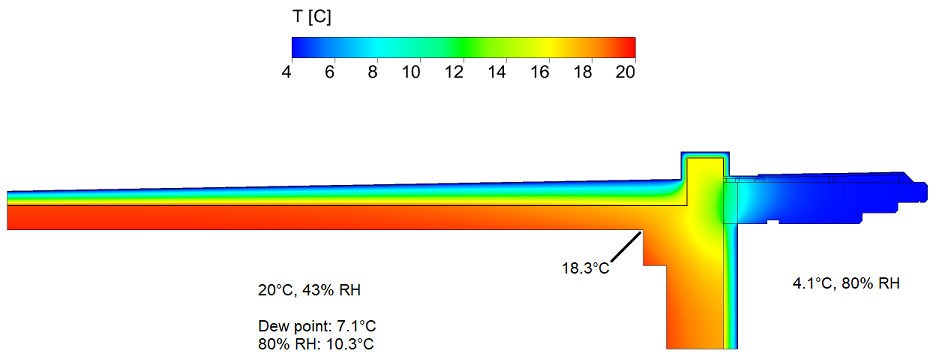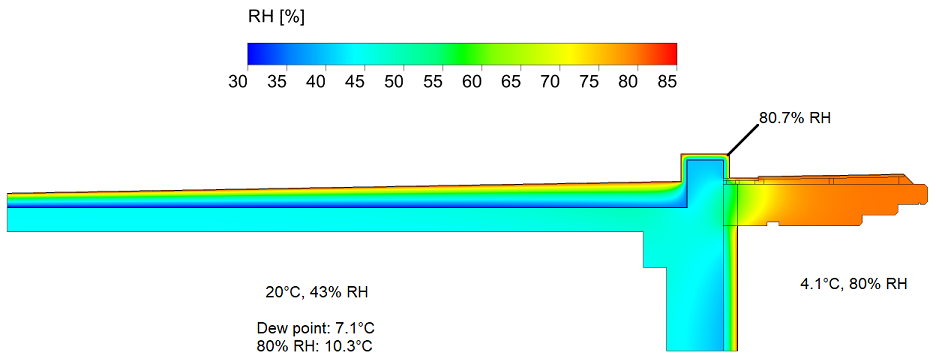The challenge
A new apartment block will have a flat concrete roof with a concrete upstand
around its perimeter. The roof will be overlaid with a self-adhesive aluminium
foil vapour barrier, a tapered layer of rigid insulation and a liquid-applied
waterproofing layer. The architect must demonstrate to the client that there will
be no surface condensation on the bottom surface of the concrete roof and no
interstitial condensation in the concrete or the insulation.
Flat roof

The solution
Atkinson Science carried out a risk assessment for surface and interstitial
condensation in accordance with BS5250:2011. In the concrete upstand the diffusion
of heat and water vapour is significant in two coordinate directions. We extended
the one-dimensional method recommended in the British Standard to two dimensions
by using a CFD program. We applied the method to the month of February, which is
the coldest month and the one in which surface and interstitial condensation are
most likely to occur.
We found that the lowest surface temperature in the space below the roof was
18.3°C. This temperature was well above the dew point of 7.1°C and the 80% RH
temperature of 10.3°C, so we concluded that there was no risk of surface
condensation, mildew or mould growth in the space. We found that the relative
humidity in the concrete roof and insulation was no higher than 80.7%, so we
concluded that there was no risk of interstitial condensation. The highest
relative humidity occurred at the outer surface of the insulation at a corner of
the upstand. The aluminium foil vapour barrier acts to restrict the flow of vapour
from the concrete to the insulation, so there is no risk of condensation on the
cold side of the insulation.
Computed temperature

Computed relative humidity

The benefits
By extending the risk assessment method recommended in BS5250:2011 to two
dimensions, Atkinson Science were able to show that there was no risk of surface
or interstitial condensation.